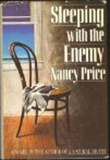Many of you know that my novel, The Clay Remembers, is fast approaching completion. I’m excited about having got it to this point—ready for an archaeologist to fact-check my descriptions of the work after which I’ll pass it along to my editor who will do the final edit. I’m hoping this means it will be ready for publication by the first of the year.
In the meantime, this month I will attend a writing conference sponsored by the Society of Southwestern Authors and Writer’s Digest, featuring Chuck Sambuchino, WD author and blogger. I will pitch my novel to a couple of agents: Adriann Ranta, Wolf Literary Services, and Patricia Nelson, Marsal Lyon Literary Agency. It would be great if one (or both) of them like the concept and ask to look at the manuscript.
Some time ago, I learned that many agents expect an author to compare her book to successful titles, books that have some elements in common with hers. It can help the agent see the book in terms of the marketplace. My task, then, was to identify those books that might help an agent see where my book fits.
 The first book I selected was Outlander, by Diana Gabaldon. It may be a stretch to make this comparison because, unlike Gabaldon’s character, Claire Randall, my character, Anna Robinson, does not physically travel back in time. She does not engage with characters and events in another time. The point of comparison for Anna, an archaeologist, is that she has visions of people and events from the past, visions triggered by artifacts she uncovers, visions that help her learn the stories of two women who were associated with those artifacts. What she learns about these women is only possible because of brief episodes in which she shares certain experiences with them.
The first book I selected was Outlander, by Diana Gabaldon. It may be a stretch to make this comparison because, unlike Gabaldon’s character, Claire Randall, my character, Anna Robinson, does not physically travel back in time. She does not engage with characters and events in another time. The point of comparison for Anna, an archaeologist, is that she has visions of people and events from the past, visions triggered by artifacts she uncovers, visions that help her learn the stories of two women who were associated with those artifacts. What she learns about these women is only possible because of brief episodes in which she shares certain experiences with them.
 Identifying the second book was harder. Since domestic violence is an important element of my story, I needed a book that dealt with that topic. I found a few, but they weren’t as well-known as I would have liked. When one of my readers told me my book reminded her of Sleeping With the Enemy, I found the comparable title. I had seen the movie many years ago, but remembered very few details. I knew that Julia Roberts’ character faked her death to escape a brutal husband and that he eventually found and confronted her. So, yes, Anna’s story has a similar plot structure, although Anna does not fake her death; she leaves hoping he will not find out where she went.
Identifying the second book was harder. Since domestic violence is an important element of my story, I needed a book that dealt with that topic. I found a few, but they weren’t as well-known as I would have liked. When one of my readers told me my book reminded her of Sleeping With the Enemy, I found the comparable title. I had seen the movie many years ago, but remembered very few details. I knew that Julia Roberts’ character faked her death to escape a brutal husband and that he eventually found and confronted her. So, yes, Anna’s story has a similar plot structure, although Anna does not fake her death; she leaves hoping he will not find out where she went.
I was not satisfied that the association of plot and structure worked effectively. And I was making the comparison with a movie that I only vaguely remembered. I finally located the book, by Nancy Price, on which the movie was based. (The book, by the way, is vastly different from the movie.) I was surprised to discover many more similarities to my story, but also a fundamental difference.
Sara Burney’s husband, Martin, is very like my character’s husband, Foster. He, like Martin, is an obsessive control freak, but he does not insist the cans in the pantry be arranged in a particular way and that the towels be folded into equal thirds. Foster’s control is exercised primarily over his wife—forbidding her to get a job, even though she has an advanced degree in archaeology, making certain she will not have children who might compete with him for her love, insisting she not be anywhere but at home. Unlike Sara Burney, instead of cowering and trying hard to please him, Anna defies him by taking jobs, only to have him show up and force her to come home. Her defiance leads to his violence.
Having grown up in a household marked by domestic violence, Anna has sworn she would never stay in an abusive marriage, and although she didn’t leave as soon as she might have, she manages an escape that leaves very little evidence of where she has gone. Eventually, of course, Foster finds out where she is and comes after her.
The fundamental difference between the Sara in the book and my character, Anna, is that Book-Sara undergoes very little development. At the end of the book, she is still the same woman she was at the beginning. She has not grown and sees no possible way to resume her real identify. Really? Even though her husband is dead? She is gloriously happy that she can continue living as Laura Pray, a woman with no history. Movie-Sara, on the other hand, told Ben who she was, and she has a dramatic scene at the end in which she shoots Martin, and not exactly in self-defense. (I checked the plot summary on Wikipedia.) In the book, Martin’s increasing instability leads him to take his own life as Sara, in disguise as a man, looks on. I could admire Movie-Sara for standing up to her husband and taking charge of her life—her real life. Book-Sara fails on all counts. I cannot imagine a happy future for her and Ben because she intends to continue their relationship built on a lie; even though he knows she is not Laura Pray, she plans to keep her identity a secret. It is an ending that, for me, simply did not work.
My character, Anna, reclaims her independence and becomes a stronger and more courageous woman as the book progresses. From the women whose stories of strength and survival come to her through history and the artifacts, she gains the strength to confront Foster and win.
This difference is significant, but I hope the comparisons work for the agents who will listen to my pitch.




